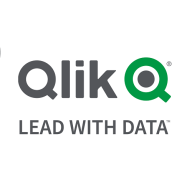

Qlik Replicate and Qlik Compose are data integration technologies competing in the data management sector. Qlik Replicate appears to have the upper hand due to its real-time data replication abilities and ease of integration across various platforms without affecting the source system's performance.
Features: Qlik Replicate is valued for its real-time change data capture capabilities, diverse data management tasks, and user-friendly configuration. It can replicate data without impacting source databases and handles logs to capture changes efficiently. Qlik Compose excels in automating data modernization, data modeling, and ETL processes, and it can auto-generate data warehouse coding and develop functional warehouses quickly. Its automation capabilities allow for quick development and management of data warehouses.
Room for Improvement: Qlik Replicate users seek better pricing strategies, quicker technical support response times, and more detailed error messages when dealing with multiple data destinations. Qlik Compose could improve its monitoring, scheduling capabilities, and user support, while users desire easier configuration and efficient processing of larger data volumes.
Ease of Deployment and Customer Service: Qlik Replicate offers versatile deployment across public, private, and hybrid clouds but could benefit from faster support response. Qlik Compose is typically used in on-premises settings, where localized support is preferred over Qlik’s centralized system. Improvements in customer support are needed across both solutions.
Pricing and ROI: Qlik Replicate is a premium solution with pricing based on data cores. It offers significant ROI through improved data management and reduced database usage. Qlik Compose pricing varies by data volume and scale, but its transparency is often questioned. Both products are seen as delivering cost savings through process automation and efficient data management.
| Product | Market Share (%) |
|---|---|
| Qlik Replicate | 2.3% |
| Qlik Compose | 1.0% |
| Other | 96.7% |


| Company Size | Count |
|---|---|
| Small Business | 3 |
| Midsize Enterprise | 3 |
| Large Enterprise | 6 |
| Company Size | Count |
|---|---|
| Small Business | 9 |
| Large Enterprise | 10 |
Qlik Sense is a powerful business intelligence tool that offers a range of features to help organizations make faster and more informed decisions. Its primary use cases include operational and financial dashboards, self-service reporting, and centralized access to cross-functional reports. The solution is praised for its mobile platform, ease of use, data-sharing capabilities, and extensibility.
Qlik Sense has helped organizations improve data literacy, reduce time consumed in complex reports, and provide widely available MI to senior stakeholders. It also enables self-service analytics, improves data quality and governance, enhances collaboration, and reduces costs.
Qlik Replicate is a data replication solution for replicating data from one source database to another for business intelligence software. It offers data manipulation and transformations, replication without impacting source databases, and ease of use without needing ETL. The solution is stable and user-friendly, with detailed logging and support.
Qlik Replicate has improved the organization by allowing each team to replicate their data into a single-source data location. The most important feature of Qlik Replicate is its ability to replicate and update records without needing a programmer.
We monitor all Data Integration reviews to prevent fraudulent reviews and keep review quality high. We do not post reviews by company employees or direct competitors. We validate each review for authenticity via cross-reference with LinkedIn, and personal follow-up with the reviewer when necessary.